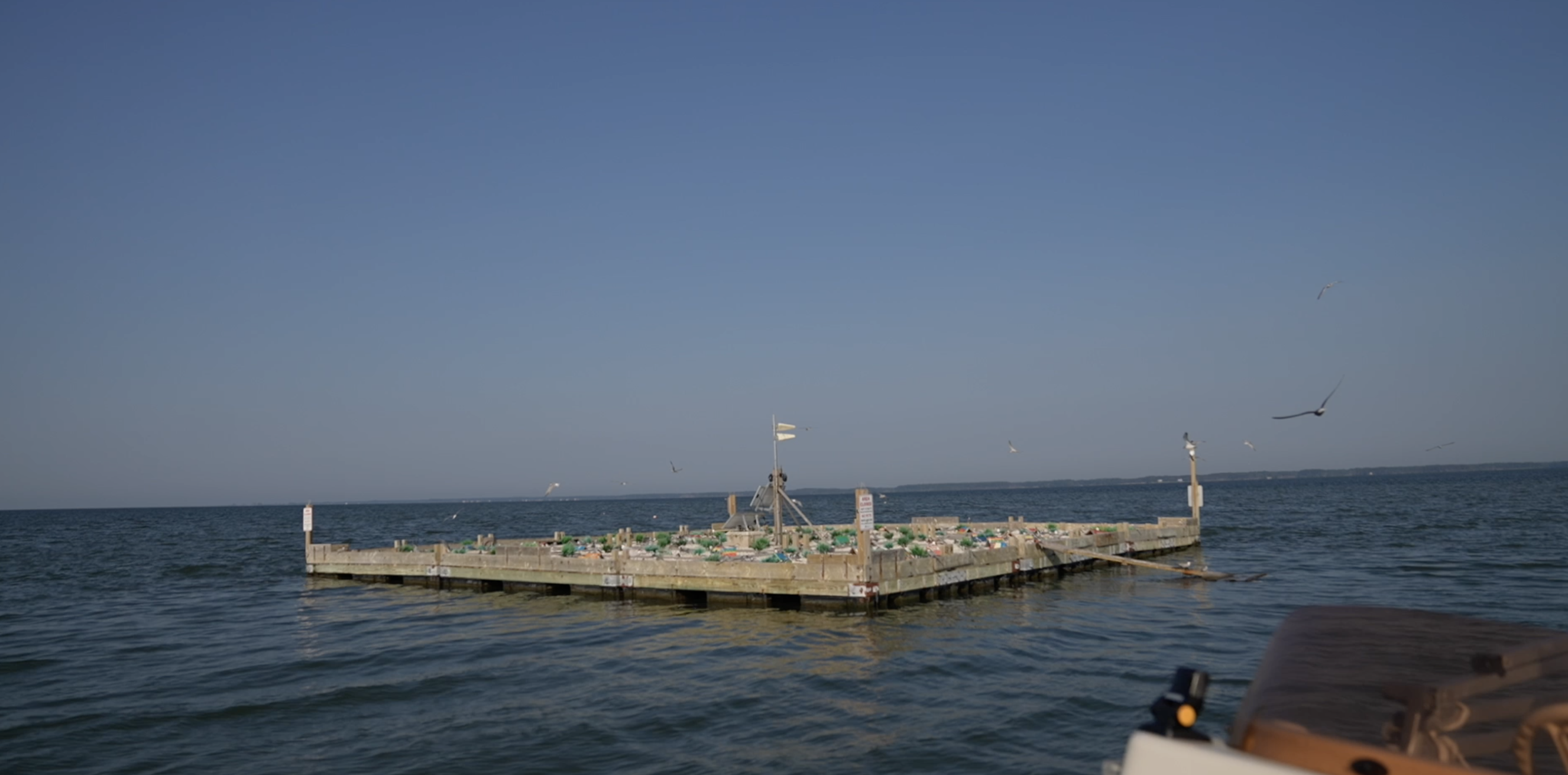As the morning sun shines over coastal Maryland, Kim Abplanalp guides a boat across the water while observing the birds overhead.
"There is nowhere for waterbirds to nest anymore," said Abplanalp, the bird conservation coordinator with Maryland Coastal Bays Program. "They are getting washed out, destroyed by sea level rise and erosion."
Slowly, the boat comes upon a last-ditch effort to save one endangered bird species: the common tern.
"It's sort of build an island, terns will come as our motto," Abplanalp said.

It's an artificial island sitting in the middle of the bay, where the endangered terns now come to nest in the summer before they migrate to South America for the winter.
"We put out decoys. We put out habitat. So that is chick houses, grass, fake artificial grass," Abplanalp said. "We created an island that mimics a natural island as best as we could, and the birds responded immediately."
The "island" is actually made up of 18 separate raft units which float on the surface of the water.
"These raft units are wooden, framed with dock floats underneath, and the dock floats have wheels on so that the units can be wheeled up and down public boat ramp," said David Curson with Audubon Mid-Atlantic.

The floating island came to be after a similar one showed success in Toronto, Canada. Then Audubon, along with the Maryland Coastal Bays Program and the Maryland Dept. of Natural Resources, joined together to create one in Maryland.
"We've had storms come through with 55-mile-an-hour winds, and our remote camera system that we have set up on the island just shows the thing flexing," Curson said. "And birds can have nests and young on the island in a tropical storm, and they survive just fine. It works very well, and it could very easily be applied to other sites around America's coasts."
In the artificial island's first year, 23 nesting pairs used the island. In 2022, the number rose to 155 pairs. This year, there are 295 pairs.
"You can see that two ways: One way is it shows how successful the project is, but the flip side is that it shows how desperate these birds are for nesting sites," Curson said.
Still, the artificial island is making a difference.
"By putting in one island, we managed to recover about 25% of what we had almost 35 years ago," said David Brinker with the Maryland Department of Natural Resources.
SEE MORE: Stolen New York swan babies rescued after mother was eaten
Brinker has studied water birds for decades and spearheaded the artificial island idea.
"We're in an extinction crisis right now," he said. "We could put in more islands, but the islands are sort of a stop-gap approach here. They're fairly expensive to build. They cost about $100,000 to build one of these things. If you get 10 years out of them, that's a pretty good return on your investment, but it's not the long-term solution that's needed."
So, what is the long-term solution?
Back out on the bay, Abplanalp said it all comes down to what the birds need most.
"We need to restore the islands so that they can sustain themselves," she said. "It's a lot of effort. It's a lot of money. It's money well-spent, though, because part of that is that we need to have every species on the planet that is here. I mean, everything is here for a reason, and they all balance each other out. We've learned that time and time and time again."
Trending stories at Scrippsnews.com




